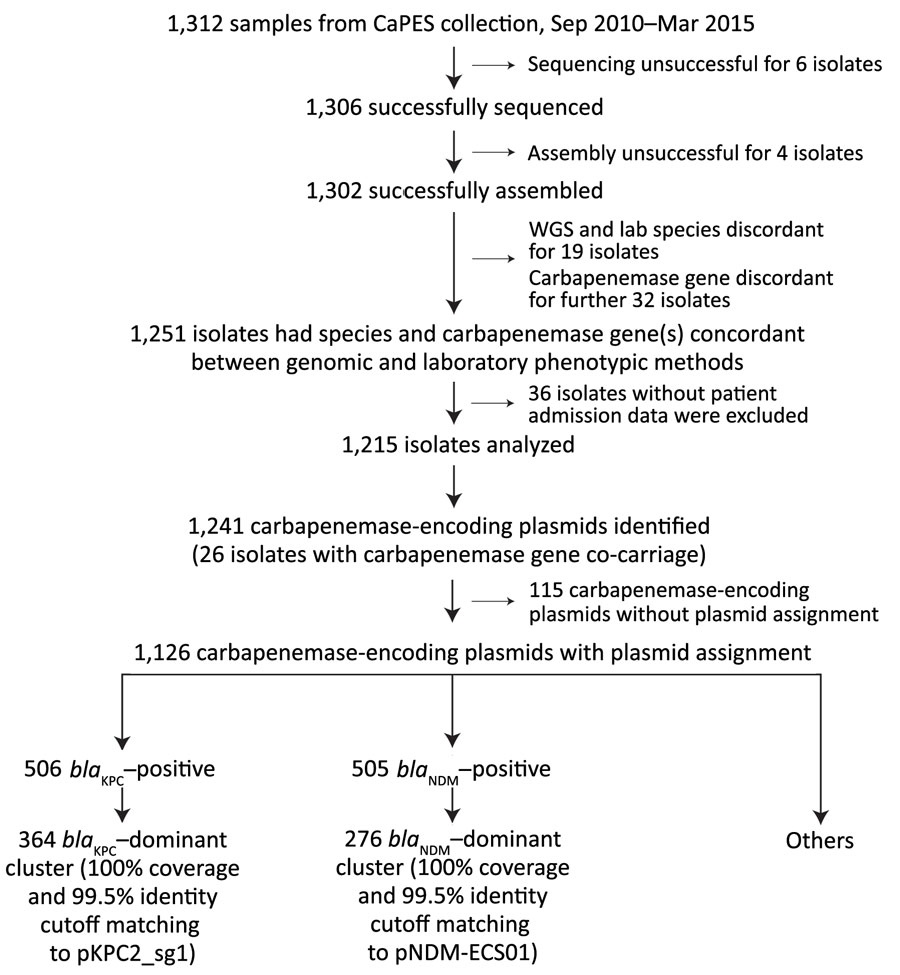Volume 28, Number 8—August 2022
Research
Dominant Carbapenemase-Encoding Plasmids in Clinical Enterobacterales Isolates and Hypervirulent Klebsiella pneumoniae, Singapore
Figure 1

Figure 1. Flowchart of steps used for identifying dominant carbapenemase-encoding plasmids in clinical Enterobacterales isolates and hypervirulent Klebsiella pneumoniae, Singapore. We collected 1,312 samples available in the CaPES collection and analyzed 1,215 whole-genome sequenced samples. We identified 2 dominant clusters with large numbers of carbapenemase-encoding plasmids; the blaKPC–dominant cluster comprised pKPC2 plasmids and the blaNDM–dominant cluster pNDM1 plasmids. CaPES, Carbapenemase-Producing Enterobacteriaceae in Singapore (CaPES) (Enterobacteriaceae is the former name of Enterobacterales); WGS, whole-genome sequencing.
Page created: June 22, 2022
Page updated: July 20, 2022
Page reviewed: July 20, 2022
The conclusions, findings, and opinions expressed by authors contributing to this journal do not necessarily reflect the official position of the U.S. Department of Health and Human Services, the Public Health Service, the Centers for Disease Control and Prevention, or the authors' affiliated institutions. Use of trade names is for identification only and does not imply endorsement by any of the groups named above.